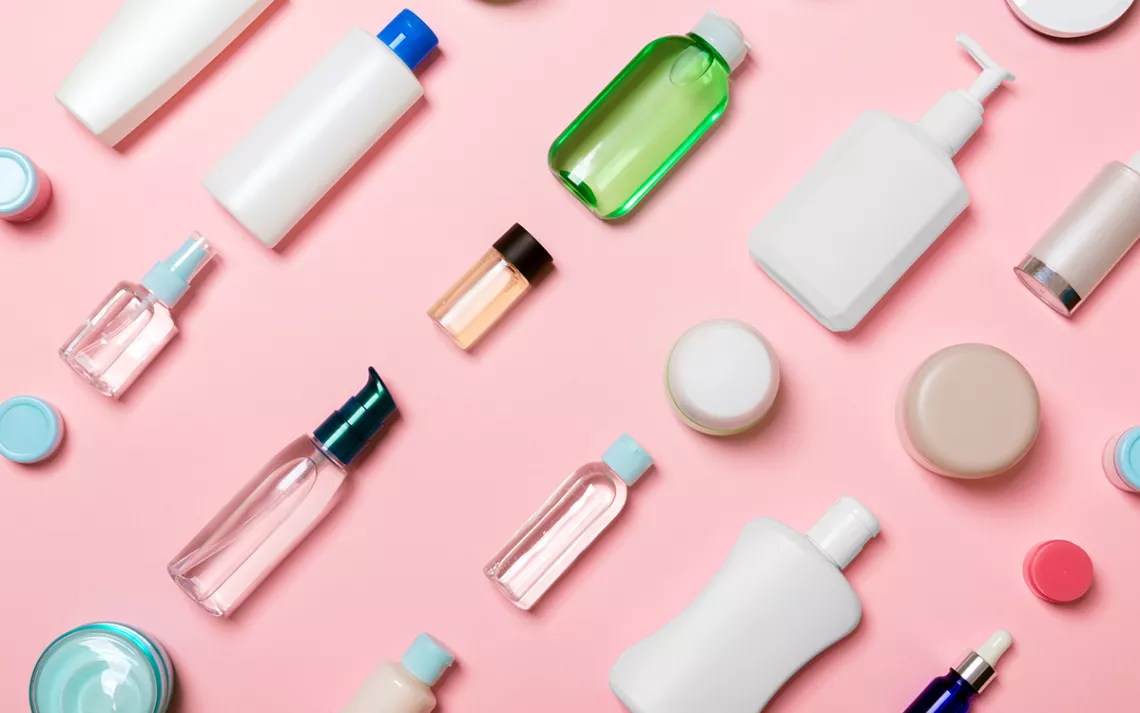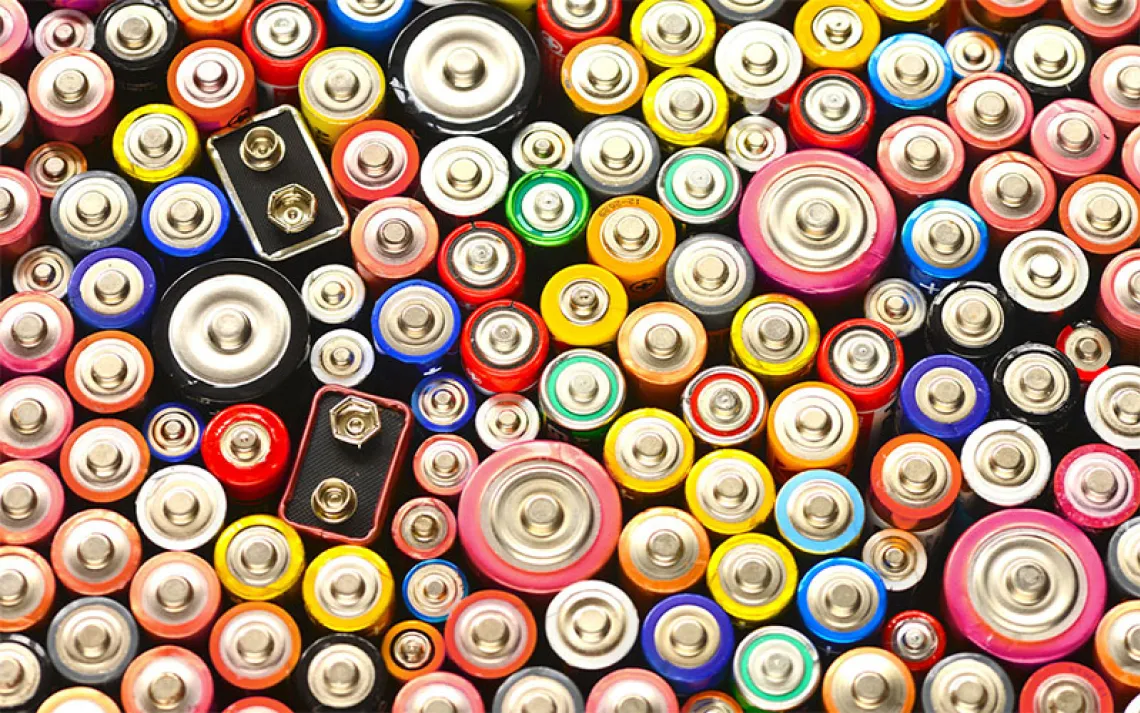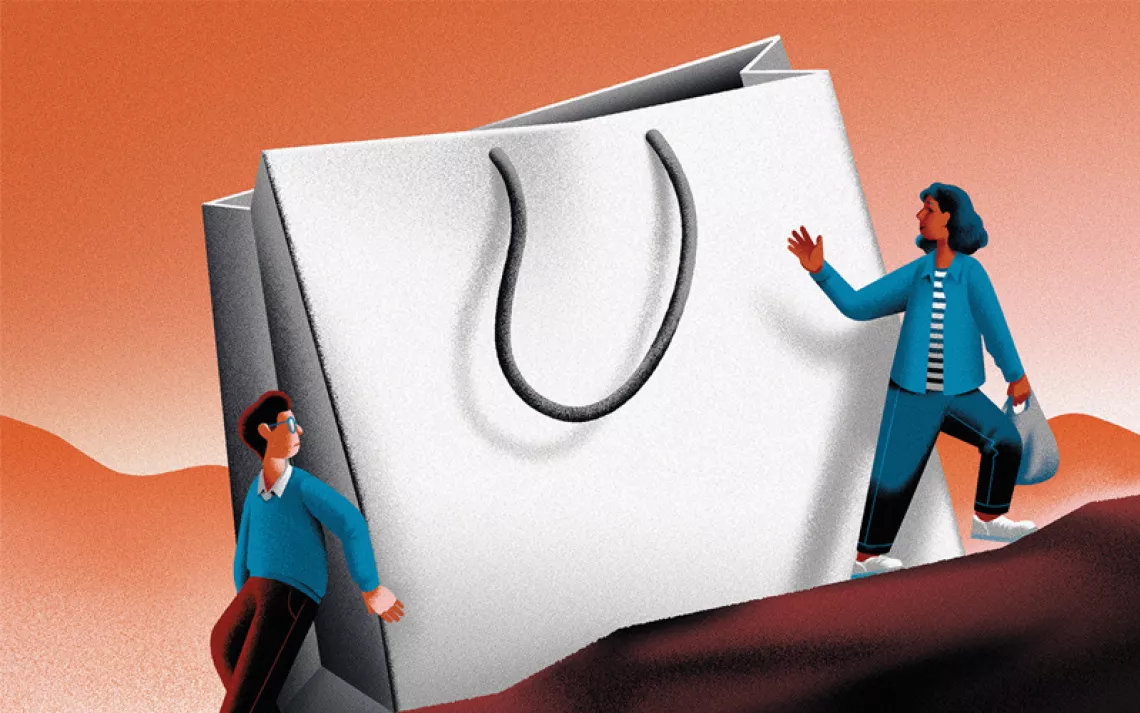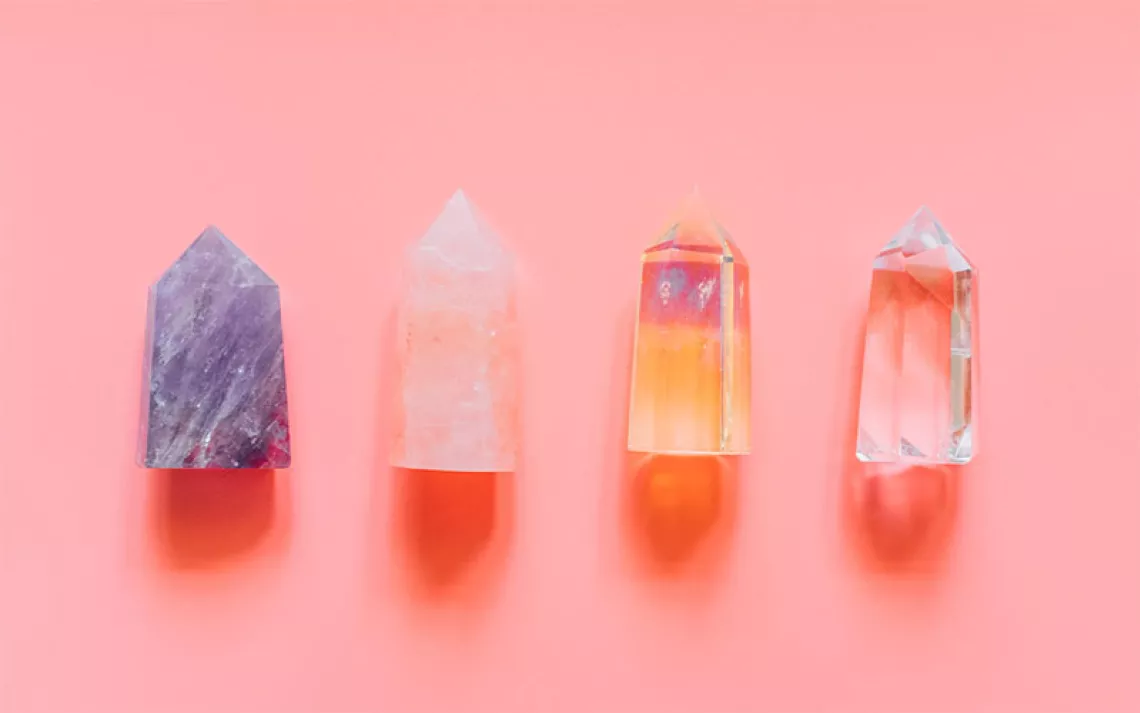Just Say No to 1,4-Dioxane
How to keep the chemical out of your water, skin-care products, and cleaners

Photo by Mykola Soslukin/iStock
Readers of this column already know that many everyday products contain chemicals such as PFAS that can be dangerous to human health. But chances are you haven’t heard of 1,4-Dioxane. It’s time to ban it from your home.
1,4-Dioxane is a synthetic industrial chemical that can be found in just about any everyday household product, including skin care, food additives, food packaging, produce sprayed with some pesticides, dish detergent and cleaners, paint strippers, dyes, greases, waxes, and varnishes. The chemical can also be found in drinking water in areas where plastics, such as polyethylene terephthalate (PET), have been manufactured. In 2017, EWG’s Skin Deep database found at least 8,000 skin-care products may be contaminated with it.
It’s in skin-care and cleaners because it’s formed as a byproduct during the manufacturing of common ingredients: ethoxylated ingredients. “In 2020, 39 percent of personal-care products contained at least one ethoxylated ingredient when Clearya and Silent Spring Institute analyzed ingredient lists of 7,300 personal-care, baby-care, and cleaners offered by US online retailers,” Amit Rosner, a Clearya cofounder, told me.
Now the bad news: The chemical is linked to cancer and liver and kidney damage. Almost 90 million Americans in 45 states had it in their drinking water, according to the most recent report by EWG. Even expensive reverse-osmosis water filters cannot remove all of it. There is no federal law limiting 1,4-Dioxane in tap water. Small and medium-size water utilities rarely test for it, and private wells aren’t required to test for it.
Some advice for how to avoid this dangerous chemical can be a tad convoluted, to say the least. EWG says that you can avoid 1,4-Dioxane by saying no to products with PEG, polyethylene, polyoxyethylene, and polyoxynolethylene and chemicals ending in “–eth” and “–oxynol." But in addition to EWG’s list, the FDA says to look out for chemicals with the prefix, word, or syllables "-eth-," and "-oxynol-.”
Huh?
I set out to find an easier way to avoid 1,4-Dioxane. I began my quest by contacting manufacturers directly. That led into a head-spinning runaround. Different manufacturers I interviewed disputed each other’s methods for testing 1,4-Dioxane in their products. Then I learned that even if manufacturers say they use one of the test methods in the USA EPA 1,4-Dioxane fact sheet, you still need to ask for certificates of analysis. For example, the isotope dilution gas chromatography mass spectrometry (GS/MC) method has a detection limit of 10 parts per million. But by December 31, 2022, cleaners sold in New York must have less than two ppm of 1,4-Dioxane.
Seventh Generation and Dirty Labs told me what they know. According to Martin Wolf, Seventh Generation’s sustainability and authenticity director, “Both [FDA and EWG] statements are insufficient. They group a large number of chemicals that don't form 1,4-Dioxane with some that might, and they fail to alert consumers to the largest sources of 1,4-Dioxane in consumer products, ether sulfates such as sodium laureth sulfate (SLES), and similar chemicals such as ammonium laureth sulfate, sodium (or ammonium) coceth sulfate, and sodium (or ammonium) C10-C18 pareth sulfate.”
To make things even more confusing, Dirty Labs keeps these ingredients with “-eth-” out of their products because they might have 1,4-Dioxane: SLES and alkyl (C10-16) ether sulfate, lauryl ethoxylate, lauryl alcohol ethoxylate, laureth-6, laureth-7, C10-C16 ethoxylated alcohol, C12-15 pareth-2, soy methyl ester ethoxylate, alkoxylated polyethyleneimine, and polyethyleneimine ethoxylate propoxylate.
You’d have to be a chemical engineer for that to not sound like gobbledygook. But it just shows how these dangerous chemicals lurk in all the products we use and are essentially hidden in plain sight by naming conventions and applications that make it almost impossible to weed them out of our lives.
After much sleuthing and product crunching, I came up with an easier way to just say no to 1,4-Dioxane. Here is a list of 1,4-Dioxane-free brands, apps, and policy ideas to help you duck this dangerous chemical.
Shop skin-care products and cleaners with the Clearya phone app or web browser extension
When I asked Clearya if they screen out 1,4-Dioxane, they said yes and shared FDA’s ingredient list with me. If you browse products in an online store in which Clearya has collected ingredient data, click Clearya’s logo under each product to see whether it has toxic ingredients like 1,4-Dioxane or allergens. Then if you click Clearya logo’s Discover tab, you’ll see safer alternatives.
Look for plastic-pod-free cleaners with 1,4-Dioxane levels allegedly below one ppm
Fill your own containers at zero-waste stores with 1,4-Dioxane-free cleaners like those at Fountain House (which provides community therapy and hires people with serious mental illness). Or try Booda Organics laundry powder. It has only four unscented, edible ingredients that they use in their all-in-one shampoo, shave, and body soap: baking soda, organic olive oil, virgin coconut oil, and fair trade shea butter. I bought their 10-pound bag to save money.

Make every day an Earth Day
Get articles like this one sent directly to your inbox.
With this action you affirm you want to receive Sierra Club communications and may vote on policy designated by the Sierra Club Board.
Consider avoiding cleaners with pods because they can be made with non-biodegradable plastic. Even if some say they fully degrade, they’re still made of plastic, a polluting source I try to avoid. I found two plastic-pod-free brands, though they’re in single-use metal containers and have palm oil (which has 1,000 names that don't sound like palm oil). Both say they use vegan and animal-cruelty-free ingredients and have some certified biobased ingredients.
Dirty Labs sells concentrated liquid laundry detergent with 1,4-Dioxane that’s nondetectable under one ppm. “We don’t use plastic pods or sheets, because even if they say they’re made of water-soluble polyvinyl alcohol (PVOH or PVA), pods can release microplastics,” Soyoung Park, Dirty Labs chief marketing officer, told me. When I asked if they’ll have plastic-free containers, Park said they would eventually.
Seventh Generation claims they have products formulated to have no detectable 1,4-Dioxane. When I asked how that was possible when they use laureth-6 and laureth-7, Wolf said they source only from suppliers that demonstrate good process control and that they test for it using the technique of headspace GC/MS with isotope dilution that is specific to 1,4-Dioxane. Seventh Generation’s Zero Plastic Packaging line includes powder and tablet laundry, dish, handwash, and bath and kitchen cleaners. When I asked if they’re trying to find a way for customers to refill their own containers at stores someday, they said yes.
Make sure other cleaner, dish-soap, and detergent manufacturers list all ingredients
Did you know those cleaners sold in California had to list all ingredients on manufacturer websites as of 2020 and on product labels by 2021? Some manufacturers don’t seem to know that either. If they don’t, you can ask the California Department of Toxic Substances Control to give them a gentle reminder. Manufacturers must also list on their website a link to each product’s safety data sheet so you can see health and environmental health hazards. The product label must also list the manufacturer’s toll-free number and website.
For readers who live outside California, I strongly suggest contacting a local elected official to ask them to advocate for the same kind of transparency.
Ask companies, elected officials, utilities, and the FDA to clean up their act and regulate 1,4-Dioxane
According to a 2017 EWG report, companies can minimize 1,4-Dioxane in final products. Ask the FDA to regulate 1,4-Dioxane in personal-care products. And ask the US EPA to set a legal limit for 1,4-Dioxane in drinking water and regulate industrial uses. You can also ask your water utility to install treatments to reduce 1,4-Dioxane in your water.
 The Magazine of The Sierra Club
The Magazine of The Sierra Club



